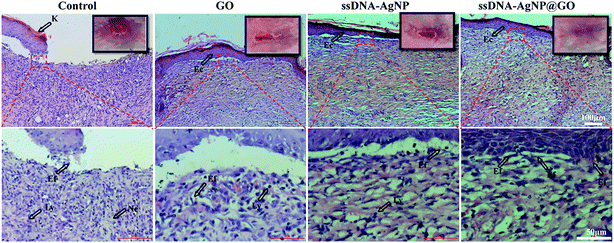 Open Access Article
Open Access ArticleCreative Commons Attribution 3.0 Unported Licence
Correction: Synthesis of DNA-guided silver nanoparticles on a graphene oxide surface: enhancing the antibacterial effect and the wound healing activity
Chunyi Tonga,
Wei Zoub,
Weimin Ninga,
Jialong Fana,
Li Lia,
Bin Liu*a and
Xuanming Liu*a
aCollege of Biology, Hunan Province Key Laboratory of Plant Functional Genomics and Developmental Regulation, Hunan University, Changsha, 410082, PR China. E-mail: binliu2001@hotmail.com; Fax: +86 731 89720939; Tel: +86 731 89720939
bKey Laboratory of Hunan Provincial TCM Administration for TCM in Obstetrics & Gynecology, Hunan Provincial Maternal and Child Health Care Hospital, Changsha 410008, PR China
First published on 29th November 2019
Abstract
Correction for ‘Synthesis of DNA-guided silver nanoparticles on a graphene oxide surface: enhancing the antibacterial effect and the wound healing activity’ by Chunyi Tong et al., RSC Adv., 2018, 8, 28238–28248.
In the published article in Fig. 6E, the enlarged pictures of GO and ssDNA-AgNP groups were duplicated, and the corrected version is shown below.
Additionally, in Fig. S7 (ESI), kidney slice pictures of control and GO groups and lung slice pictures of ssDNA-AgNPs and ssDNA-AgNPs@GO were duplicated. A revised version of the ESI has been published.
The Royal Society of Chemistry apologises for these errors and any consequent inconvenience to authors and readers.
| This journal is © The Royal Society of Chemistry 2019 |

